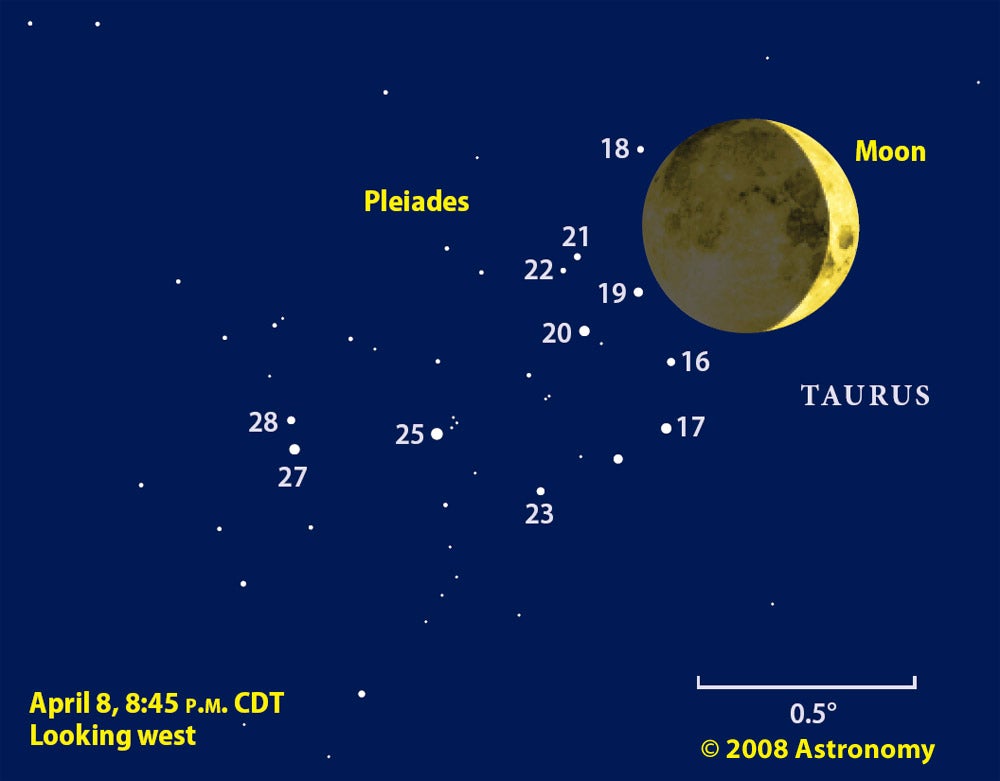
WAUKESHA, WI – The night sky will deliver one of its greatest spectacles April 8 when a crescent Moon will appear against the colorful tapestry of a twilit sky. Add the Pleiades star cluster to the mix and the stage is set for a performance no skygazer will want to miss.
Mark your calendar for Tuesday, April 8. Head outside no later than an hour or so after sunset (roughly 8:30 p.m. local daylight time), and look to the west. Your eyes should land immediately on the slender crescent Moon, oriented with its cusps standing nearly straight up from the horizon.
Binoculars will reveal a stunning sight. “Point them at the Moon,” says Astronomy Senior Editor Richard Talcott. “The bright Pleiades star cluster sparkles like a clutch of tiny diamonds accenting the primary jewel — the Moon.”
For more information about this event, or to schedule an interview with an Astronomy magazine editor, please contact Matt Quandt at 262.798.6484 or mquandt@kalmbach.com.
The Pleiades ranks among the finest deep-sky objects in the sky. Also known as the Seven Sisters, the cluster contains more than 100 stars. Under a dark sky, keen observers typically can spot the six or seven brightest Pleiads. On the 8th, however, the nearby Moon likely will drive all the stars below naked-eye visibility. It takes about three Full Moons to span the Pleiades apparent size.
North Americans will get the best views of this conjunction. From the East Coast, the Moon stands just to the lower right of the cluster as darkness falls. The Moon appears closer to the cluster’s center the farther west you live.
More resources from Astronomy.com:
- Astronomy news
- Astronomy basics
- Glossary of astronomical terms
- Return to Astronomy “For the media” page
Astronomy‘s mission:
Astronomy promotes the science and hobby of astronomy through high-quality publications that engage, inform, entertain, and inspire.
From the West Coast, the Moon lies just above the cluster’s stars. Regardless of your location, the Moon will have moved noticeably relative to the cluster by the time the pair sets shortly after 11 p.m. local daylight time.
When you first gaze at the Moon, you may see only its brightly lit crescent. Look a little closer and you’ll see an ashen light filling out the “dark” part of the Moon’s disk. This light comes from sunlight reflecting off Earth’s dayside up to the Moon and back to us. Literally, the Moon is bathed in earthshine.









